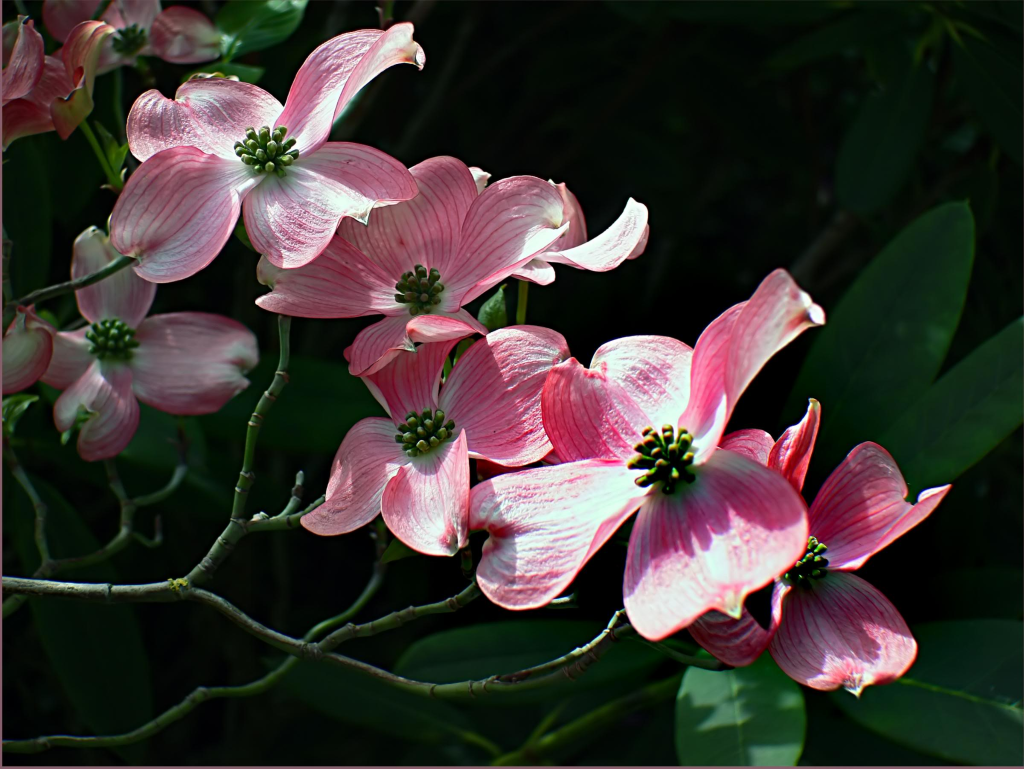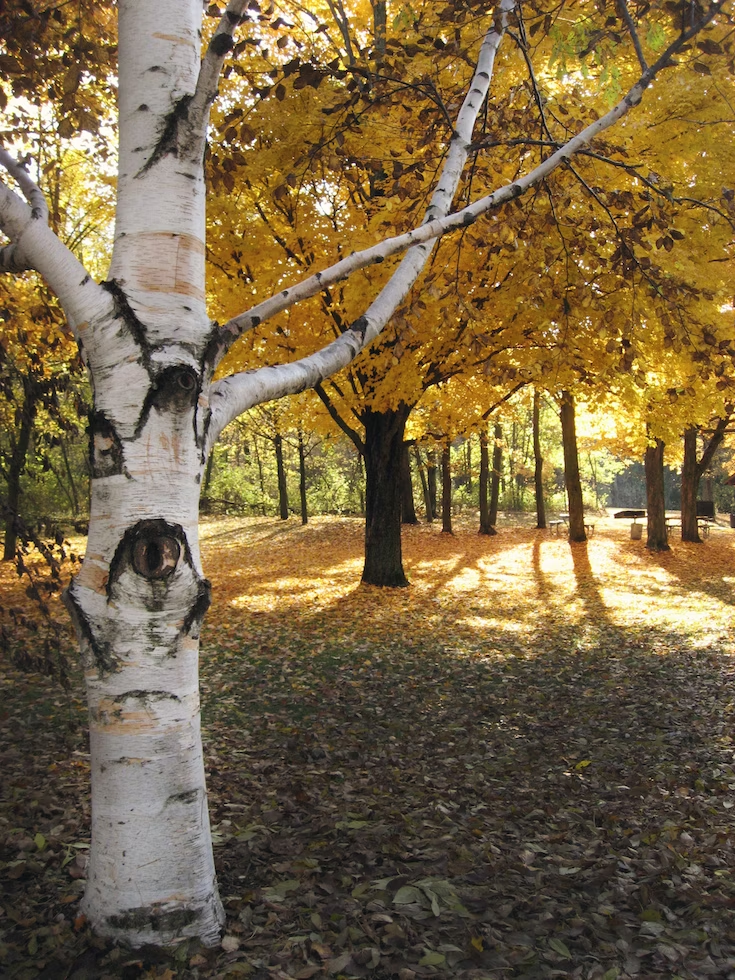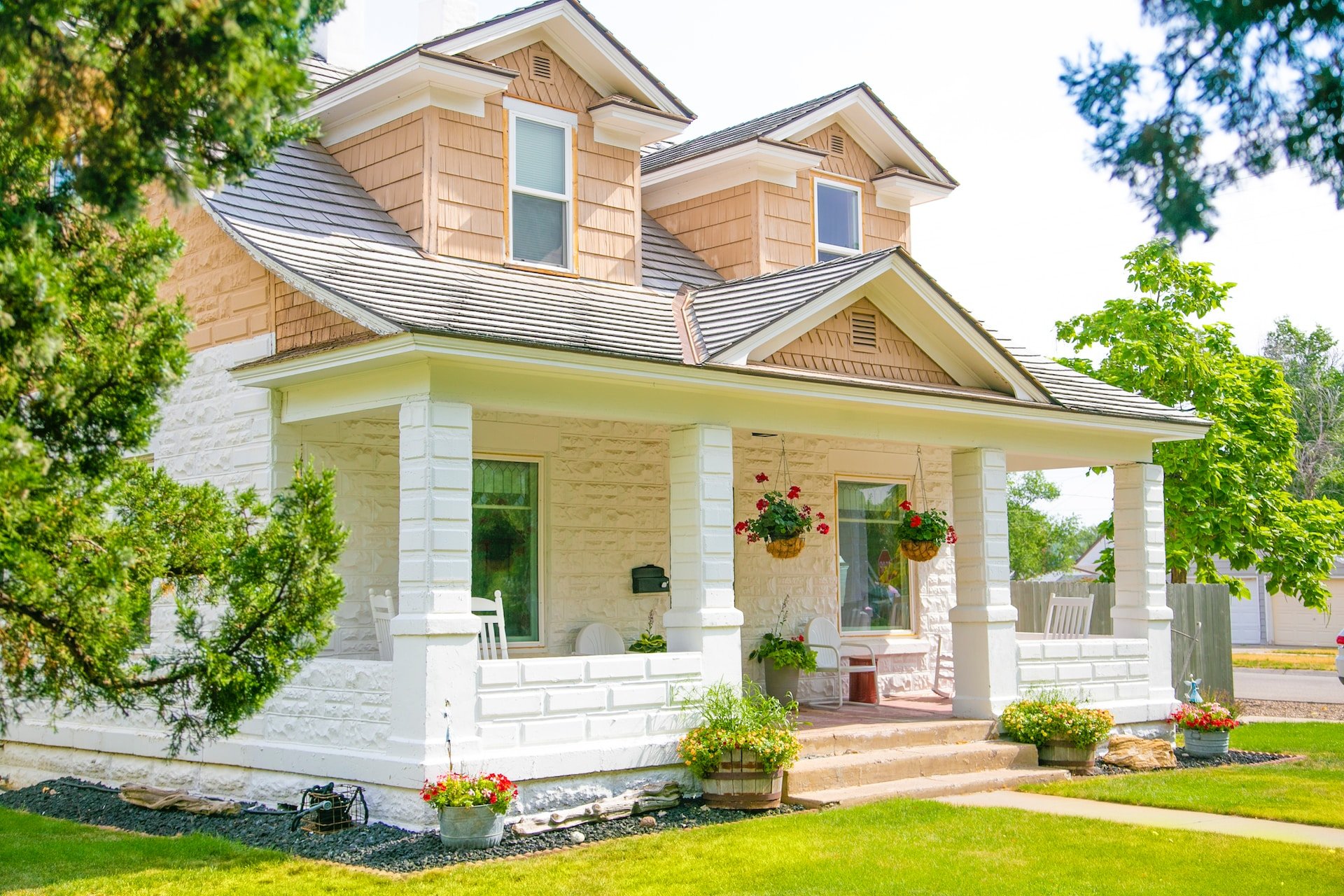A charming home with a front yard that boasts the perfect tree is the dream of almost every homeowner. We’re here to help you turn that dream into reality.
The carefully curated list below features some of the best front yard trees to add curb appeal and increase property value.
Imagine how each of these trees could fit into your own front yard. Consider the shade they might cast on a sunny day, the vibrant colors they could bring during fall, and the delicate blossoms that might greet you each spring morning.
Regardless of your personal style or landscape requirements, there’s something for everyone. So, without further ado, embrace the magic of nature as we introduce you to the ultimate selection of top-notch trees just waiting to be planted in your front yard.
Japanese Maple (Acer palmatum)

The Japanese Maple has long been revered as an elegant choice for those with smaller yards or limited space.
This distinctive tree typically reaches a modest height of 20-32 feet, making it the perfect addition to cozy gardens. Its delicate branches stretch gracefully towards the sky, captivating the eyes of all who witness its splendor.
One of the most striking features of the Japanese Maple is its vibrant red foliage that emerges in the fall. The rich crimson hues provide a stunning contrast against the intricate network of branches, creating a visual spectacle that effortlessly captures the essence of autumn.
As if this wasn’t enough, in the springtime, tiny red flowers burst forth from the tree, adorning its already enchanting silhouette with even more beauty and visual interest.
This versatile tree thrives in a variety of environments, but it is particularly well-suited to partial shade and well-draining soil. This factor makes it a popular choice for front yards and gardens with limited sunlight, allowing homeowners to introduce an element of natural elegance to their outdoor spaces.
The Japanese Maple is also relatively low maintenance, requiring only minimal attention to ensure its health and longevity. However, it is essential to protect this delicate tree from harsh winds and extreme temperatures that could potentially cause damage.
Eastern Redbud (Cercis canadensis)

Bursting with vibrant pink blossoms, the Eastern Redbud tree heralds the arrival of spring like no other. A true showstopper, it adorns front yards and gardens with an explosion of color, capturing the heart and imagination of all who lay eyes upon it.
This small to medium-sized tree, standing proudly at heights between 20-30 feet, boasts an attractive rounded shape that adds a touch of elegance to any landscape.
The Eastern Redbud is a true marvel when it comes to adaptability. Homeowners can rest easy knowing this versatile tree will thrive in various soil types and light conditions, making it a perfect choice for those looking to spruce up their outdoor spaces.
Once established, this hardy tree requires minimal care, allowing you to enjoy its beauty without worrying about constant upkeep. Plus, its heart-shaped leaves transition from green in the summer to bright yellow in the fall — what’s not to love?
Blue Spruce (Picea pungens)

The Blue Spruce is an enchanting, eye-catching tree that will transform your front yard into a captivating oasis. With its shimmering silver-blue needles and statuesque charm, this arboreal gem is guaranteed to give your property the curb appeal you’ve been craving.
As you stroll through the neighborhood, you may find yourself stopping in your tracks as the sun casts its golden rays on these majestic beauties. Their branches, adorned with a delicate dusting of frosty blue, command attention and admiration.
It’s no wonder that the Blue Spruce has become a popular choice for homeowners seeking to add a touch of ethereal allure to their landscape.
But the Blue Spruce isn’t just a pretty face. This hardy evergreen stands tall against harsh weather conditions and offers year-round visual delight. While other trees may wilt away during winter’s icy grip, the Blue Spruce remains steadfast, providing a welcome burst of color amidst an otherwise barren scene.
And let’s not forget about the pièce de résistance — the delightful fragrance that emanates from this botanical marvel. As you meander along your front walkway, let yourself be captivated by the crisp, earthy scent only a Blue Spruce can provide. It’s like stepping into a woodland hideaway each time you arrive home.
The versatility of the Blue Spruce is another factor worth considering. These beautiful conifers can grow upwards of 50 feet tall or be pruned to maintain a more modest size — perfect for nestling beneath power lines or accentuating smaller yards.
Saucer Magnolia (Magnolia x soulangeana)

In a world of endless flora, where captivating beauty is the norm, one tree rises above the rest: the Saucer Magnolia. A true showstopper in every sense of the word, this elegant specimen boasts large, fragrant blooms that dance along its branches in shades of pink and purple.
When spring arrives, and the Saucer Magnolia bursts into life, prepare to be mesmerized by its dazzling display, enchanting all who pass by.
While other trees may demand acres of land to spread their roots, the Saucer Magnolia thrives within more modest confines. Growing up to 25 feet tall, it’s an ideal choice for those with limited space.
Whether tucked into a cozy corner of a suburban yard or gracing the entrance of an urban dwelling, this versatile tree brings an air of sophistication and charm wherever it resides.
Certain conditions must be met to ensure the Saucer Magnolia flourishes in its environment.
This tree prefers well-draining, acidic soil that allows its roots to breathe and access vital nutrients. Sunlight is another critical factor, as the Saucer Magnolia thrives in full sun to partial shade.
With these elements in place, the tree will grow strong and healthy, providing a stunning backdrop for those memorable blooms.
Crape Myrtle (Lagerstroemia)

The Crape Myrtle, a beloved staple in many front yards, is known for its captivating beauty and versatility. With over 50 species of shrubs and trees included in this genus, many homeowners turn to these vibrant plants when looking to enhance their landscape.
Ranging from delicate pinks and purples to bold reds and whites, the flowers of the Crape Myrtle are sure to make a statement.
Another factor working to this plant’s advantage is its long blooming season. It allows you to enjoy gorgeous colors in your front yard almost all year round.
Crape Myrtles are drought-tolerant and thrive in full sun, making them perfect for regions with hot summers. They also feature stunning exfoliating bark that adds interest throughout the year.
Keep in mind that these trees may require regular pruning to maintain their shape and promote healthy growth. They are also susceptible to several pests and diseases, such as fungus-caused powdery mildew.
Dogwood (Cornus spp.)

The Dogwood is a classic choice for front yards, often stealing the spotlight with its delicate spring blossoms and attractive horizontal branching habit.
As an elegant addition to any landscape, these trees create a visual feast for the eyes, transforming dull spaces into picturesque scenes. Depending on the species, they range from 15 to 30 feet tall in height. As a result, dogwoods are versatile enough to fit neatly into various garden designs.
Thriving in all light conditions, Dogwoods are adaptable trees that flourish in full sun or partial shade. This adaptability makes them suitable for many locations within your landscape, ensuring you have the perfect spot to showcase their beauty.
Still, Dogwoods do have a preference for slightly acidic, well-draining soil to keep their roots healthy and happy. As a rule of thumb, they do not tolerate extremely wet or dry soils.
Paper Birch (Betula papyrifera)

With its signature peeling bark, this elegant and eye-catching tree is much more than a mere pretty face in the woods. As you stroll through your neighborhood, you may very well stumble upon this majestic beauty.
The Paper Birch’s slender trunk reaches skyward with grace, adorned with branches that sway gently in the wind. In the warmer months, its leaves dance playfully in shades of bright green, casting dappled shadows on the ground beneath.
But it’s not just the summertime when this tree steals the show — come autumn, prepare to be dazzled by a fiery spectacle of yellows, oranges, and reds as its foliage bursts into color.
With its decent size — typically reaching heights between 50 to 70 feet — the Paper Birch is ideal for most front yards without overwhelming the landscape. Besides, its deep-rooted system means less worry about those pesky roots wreaking havoc on your property’s foundation or plumbing.
Final Thoughts
A well-chosen tree can transform your front yard into a stunning oasis, drawing the envious gaze of passers-by and welcoming you home each day. The perfect tree can serve multiple purposes, from providing much-needed shade during sweltering summer months to showcasing an array of vivid colors when autumn arrives.
Consider the size and layout of your front yard when choosing your new leafy companion. A majestic Paper Birch may be awe-inspiring but could also overwhelm a smaller space. Conversely, a delicate Saucer Magnolia may get lost in a vast expanse of green.
Take note of any existing plants or landscaping features and think about how your chosen tree will complement them. This way, you’ll select the best tree for your needs.
Was it helpful?

Enamored with the world of golf Jack pursued a degree in Golf Course Management at THE Ohio State University. This career path allowed him to work on some of the highest profile golf courses in the country! Due to the pandemic, Jack began Inside The Yard as a side hustle that quickly became his main hustle. Since starting the company, Jack has relocated to a homestead in Central Arkansas where he and his wife raise cattle and two little girls.

